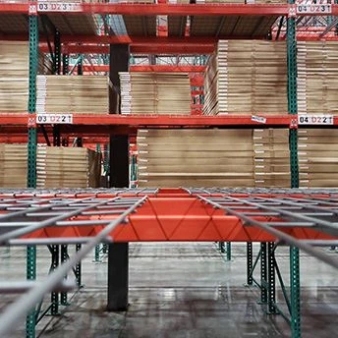Installing storage shelves requires careful planning and attention to detail to ensure the shelving units are secure, stable, and functional. Here are important details to consider during the installation process:
Site Assessment:
Carefully assess the installation site, considering factors such as floor condition, ceiling height, and available space. Ensure that the site is suitable for the planned shelving units.
Shelving Design and Layout:
Verify that the shelving design and layout align with your storage needs, including accessibility and load capacity requirements.
Assembly Instructions:
Follow the manufacturer's assembly instructions precisely. Ensure all required components and hardware are available and in good condition before starting the installation.
Location and Positioning:
Determine the exact location and positioning of the shelving units. Use a level to ensure that the shelves are installed perfectly horizontally and vertically.
Weight Distribution:
Distribute the weight evenly on each shelf, following the manufacturer's load capacity recommendations. Avoid overloading or placing excessive weight on any one shelf.
Anchoring:
For stability and safety, anchor or secure the shelving units to the floor or wall as required by the manufacturer. Use appropriate anchors or brackets for your specific shelving type.
Safety Precautions:
Install safety features such as backstops, rack guards, or anti-tip mechanisms to prevent accidents and ensure the stability of the shelves.
Adequate Aisle Space:
Maintain clear and wide aisles between shelving units for easy access, especially in high-traffic areas. Ensure that aisles are free from obstructions.

Wall Clearance:
Provide adequate clearance between the back of the shelving units and the wall to allow for ventilation and access for maintenance and cleaning.
Boltless vs. Bolted Shelving:
Depending on the shelving type, you may have either boltless or bolted shelving. Follow the specific installation instructions for your shelving type.
Use Proper Tools:
Use appropriate tools and equipment, including levels, wrenches, anchors, and safety gear, for the installation process.
Teamwork:
Depending on the size and complexity of the shelving units, you may require a team to assist with assembly and installation.
Labeling and Organization:
As you install the shelves, consider the labeling and organization of items. Ensure that you have a system for categorizing and marking items for easy retrieval.
Accessibility:
Confirm that items will be easily accessible from each shelf and that the shelving installation doesn't obstruct access or create awkward or unsafe conditions.
Proximity to Services:
If your shelving will house items that require specific environmental conditions (e.g., temperature control), ensure that the installation is located near necessary services.
Electrical Outlets and Lighting:
Ensure that electrical outlets and lighting are accessible and not blocked by the shelving units. Adequate lighting is important for safety and efficient access.
Ventilation and HVAC Considerations:
In some cases, shelving may affect ventilation or heating, ventilation, and air conditioning (HVAC) systems. Ensure that these systems are not compromised by the installation.
Warehouse Management Software (WMS):
If you are using a warehouse management system, consider how the shelving installation will integrate with WMS for efficient inventory management.
Regular Maintenance Plan:
Establish a maintenance plan to regularly inspect and maintain your shelving units to ensure they remain in good condition and prevent damage.
By paying attention to these details during the installation process, you can ensure that your storage shelves are safe, functional, and optimized for your specific storage needs.